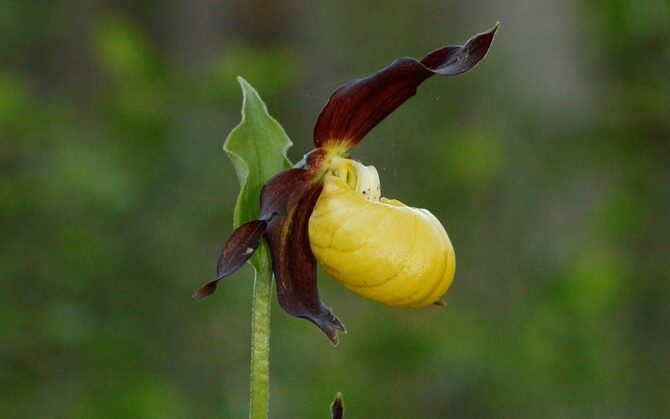Even though photosynthesis is essential for plant growth, some species have achieved through evolution the ability to have longer pauses in their growth without poking their noses out of the ground. In collaboration with scientists from the Estonian University of Life Sciences, a subset of species has been discovered that can keep their stems or tubers alive underground for up to a couple of decades while waiting for better conditions.
For studying this mysterious phenomenon, scientists from 12 countries, including scientists from the Estonian University of Life Sciences, compared long-term research data on 114 plant species. Half of these plants were various orchids.
Researchers are very interested in finding out why some plants give up to grow above-ground shoots in a year or even slightly longer periods. Also of interest is how some plants can survive in the form of rhizomes or tubers for such a long period of time without any photosynthesis.
The hypothesis was that plants “decide” in favour of an underground life more on the northern latitudes, where the summer is not favourable for plant growth every year. Data however indicates the reverse – the closer we get to the equator, the more often plants take “vacations” from life above ground.
A second hypothesis was also refuted. Although scientists assumed that the hidden lifestyle is more characteristic to plants with long lifespans, it turned out that more often it is the plants that have shorter lifespans and are mycotrophic.
Their article recently published in one of the most esteemed publications on ecology, Ecology Letters, is a result of extensive international research, confirmed professor Tiiu Kull, head of the chair of Biodiversity and Nature Tourism at the Estonian University of Life Sciences.
The lady’s slipper orchid, for example, has been studied in Estonia for over 30 years now, but valuable data can also be found on various other species. Scientists from all over the world are very interested in the research data collected from Estonia and, for example, Richard P. Shefferson, a scientist at the University of Tokyo, visits Estonia every year, added Kull.
A few years ago, it was decided that this behaviour of plants will be studied jointly and eventually dozens of scientists contributed to the research. From Estonia, Kadri Tali and Ülle Püttsepp participated in the research.
Based on the research data, scientists reached the conclusion that growth above ground is ensured by a stable and undisturbed environment. However, there is still too little data to be certain which stress-source is specifically influencing the plants to adopt a latent lifestyle. Scientists will try to determine this in the research of coming years.
The Estonian version of this article has been published at the Estonian Public Broadcasting science news portal Novaator.
 Back
Back



